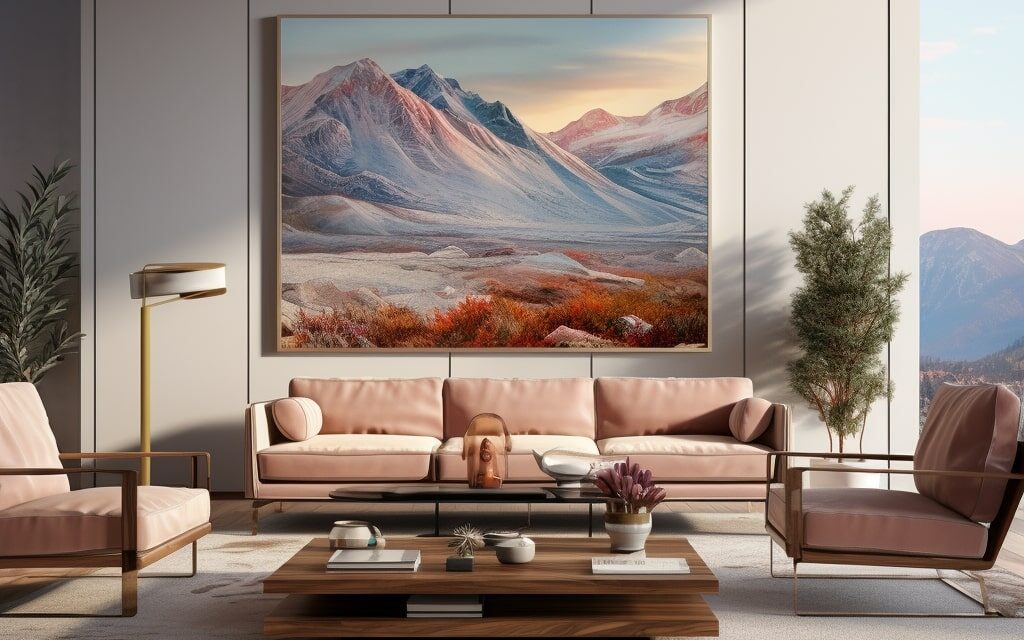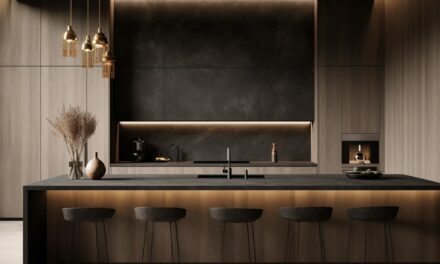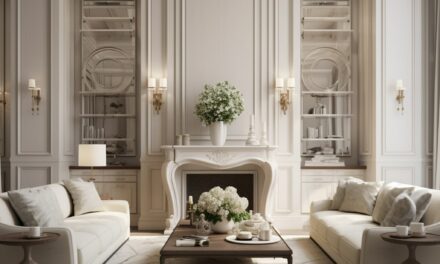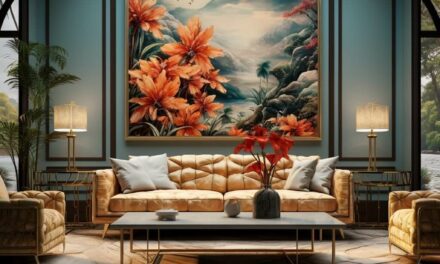Interior design is all about creating beautiful and functional spaces.
To achieve this, designers need to consider various elements, including color, texture, lighting, and layout.
However, one of the most critical components of interior design is scale.
Scale refers to the relationship between the size of objects, elements, and spaces within a room. Understanding scale is essential in creating harmonious and visually pleasing spaces that are both functional and beautiful.
Scaling can be challenging, but it is crucial to master this skill to create spaces that work for their intended purposes. In this comprehensive guide, we will explore the concept of scale, how it relates to interior design, and how to use it to create beautiful and functional spaces that stand the test of time.
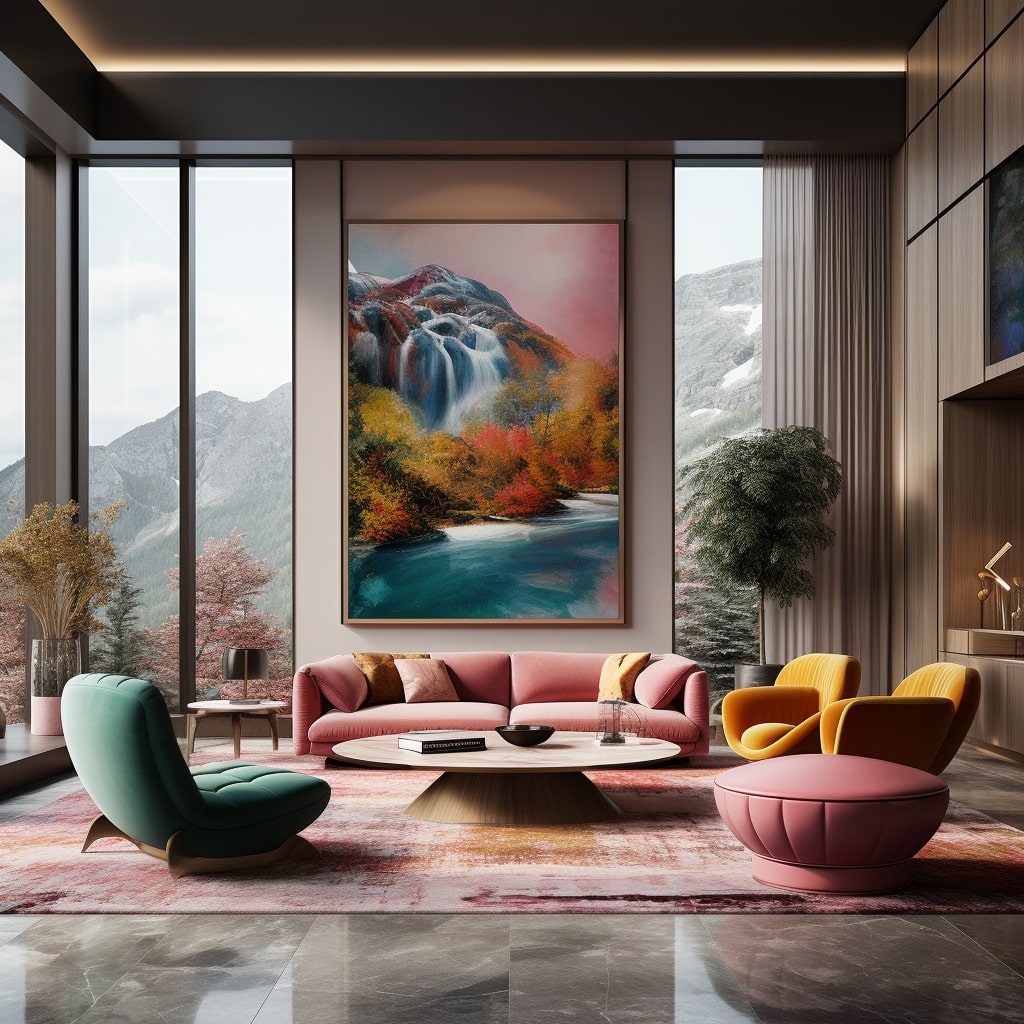
Scale and Proportion in Interior Design
Scale and proportion are important principles in interior design that help create a sense of balance and harmony within a space. While often used interchangeably, scale and proportion are distinct concepts that refer to different aspects of design.
What is Scale in Interior Design?
Scale in interior design refers to the relative size of an object in relation to the space it occupies. It can also refer to the size relationship between different objects within a room. In order to create a visually pleasing space, it is important to use objects of appropriate scale in relation to the room size and other furniture and decor.
For example, a large sectional sofa may overpower a small living room, while a small loveseat may look out of place in a large open-concept space within a luxury interior. It is important to consider the scale of the room itself when selecting furniture and decor, as well as the scale of other objects within the space.
While you’re here: What is the difference between interior design and interior architecture?
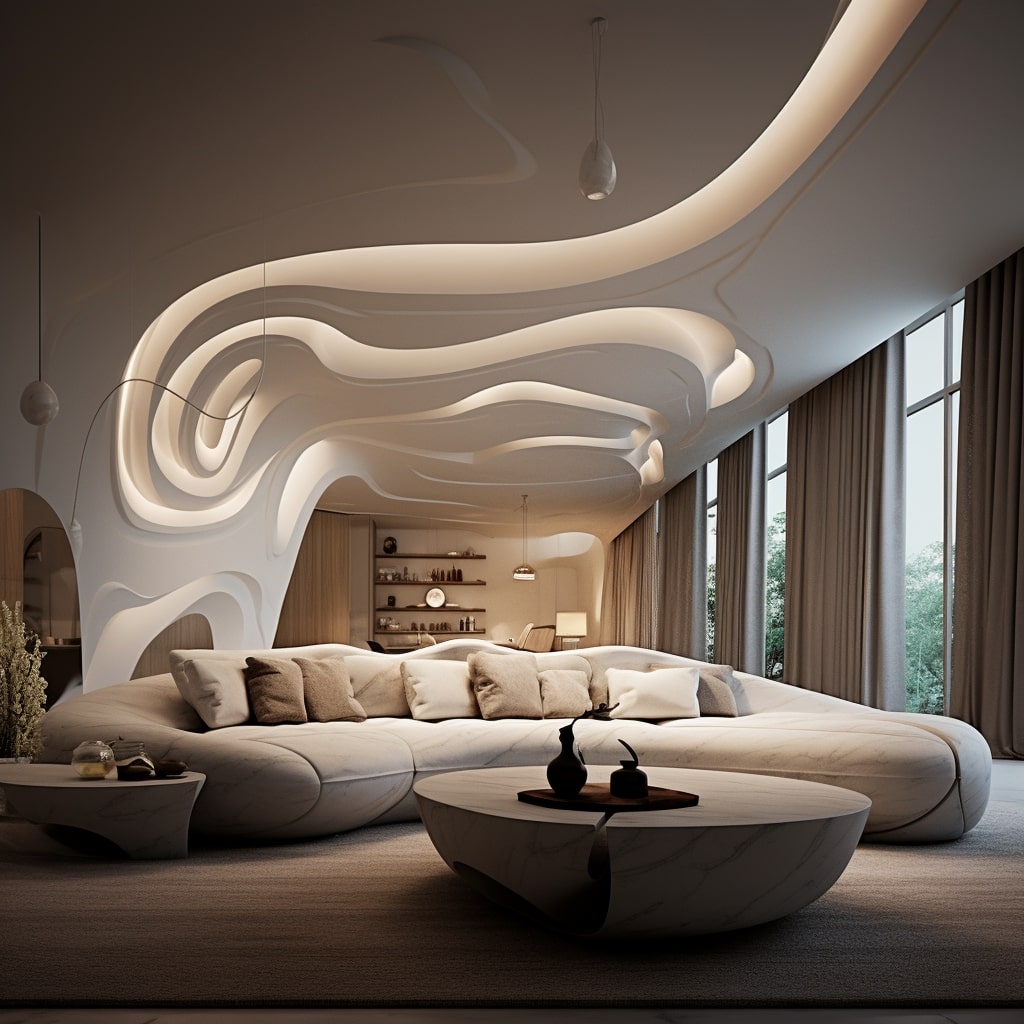

What is Proportion in Interior Design?
Proportion in interior design refers to the size relationship between different design elements. It is about how those elements relate to each other in creating a harmonious and visually pleasing space. In order to achieve proportion, it is important to balance the size of different objects, decor, and architectural features within a room.
For example, if a room has high ceilings, it may require taller furniture or larger artwork to maintain a sense of proportion and balance. In contrast, a room with lower ceilings may require smaller, more compact furniture and decor to avoid overwhelming the space.
The Relationship Between Scale and Proportion
While scale and proportion are distinct concepts in interior design, they are closely related and work together to create a cohesive and balanced space. Proper scaling of objects is important in maintaining proportion within a room, as objects that are too small or too large can disrupt the visual balance.
Similarly, achieving proportion in a room requires proper scaling of objects to create a sense of harmony. By using both scale and proportion effectively, designers can create visually interesting and well-balanced spaces that are both functional and aesthetically pleasing.
While you’re here: Why is interior design important?
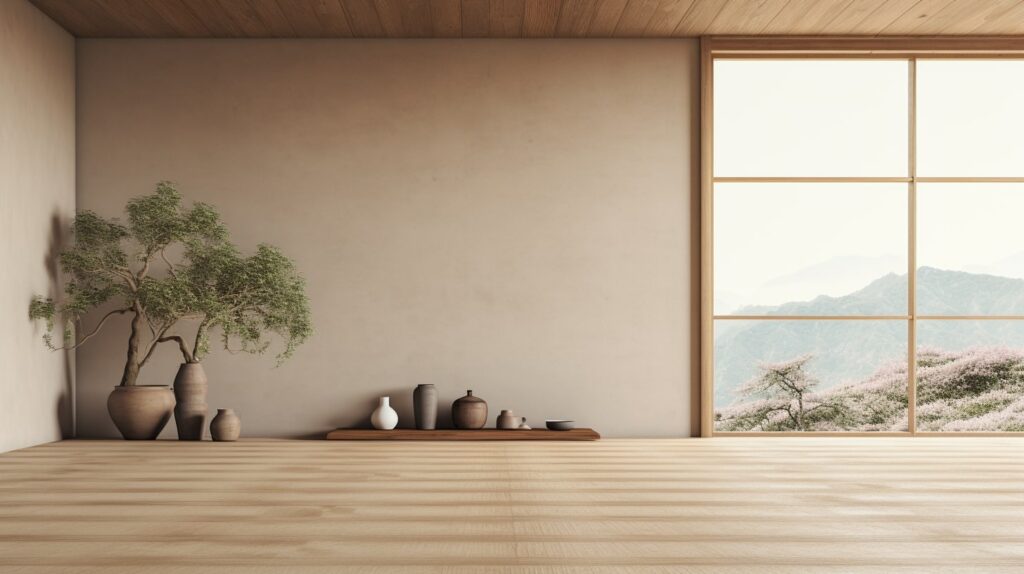

The Importance of Scale in Interior Design
Scale is a crucial aspect of interior design as it impacts both the functionality and aesthetics of a space. By understanding how to use scale effectively, designers can create harmonious and visually appealing spaces that are both comfortable and functional.
One of the key functions of scale in interior design is to create focal points within a room. By choosing furniture or decor pieces that are appropriately sized for a space, designers can create a sense of balance and draw attention to specific areas of a room. This can be particularly effective in highlighting architectural features, such as a fireplace or a large window.
Another benefit of using scale in interior design is that it helps to establish visual hierarchy. Designers can use larger furniture or decor pieces to indicate the most important areas of a room, while using smaller pieces to highlight less significant areas. This helps to create a sense of order and balance within a space, enhancing both its functionality and aesthetic appeal.
Finally, scale plays a significant role in establishing the overall atmosphere of a room. By selecting furniture and decor pieces that are appropriately sized for a space, designers can create a sense of intimacy or grandeur depending on the desired effect. For example, a room outfitted with large-scale furniture and decor pieces may feel grand and luxurious, while a room with smaller-scale pieces may feel more intimate and cozy.
While you’re here: Learn about form in interior design
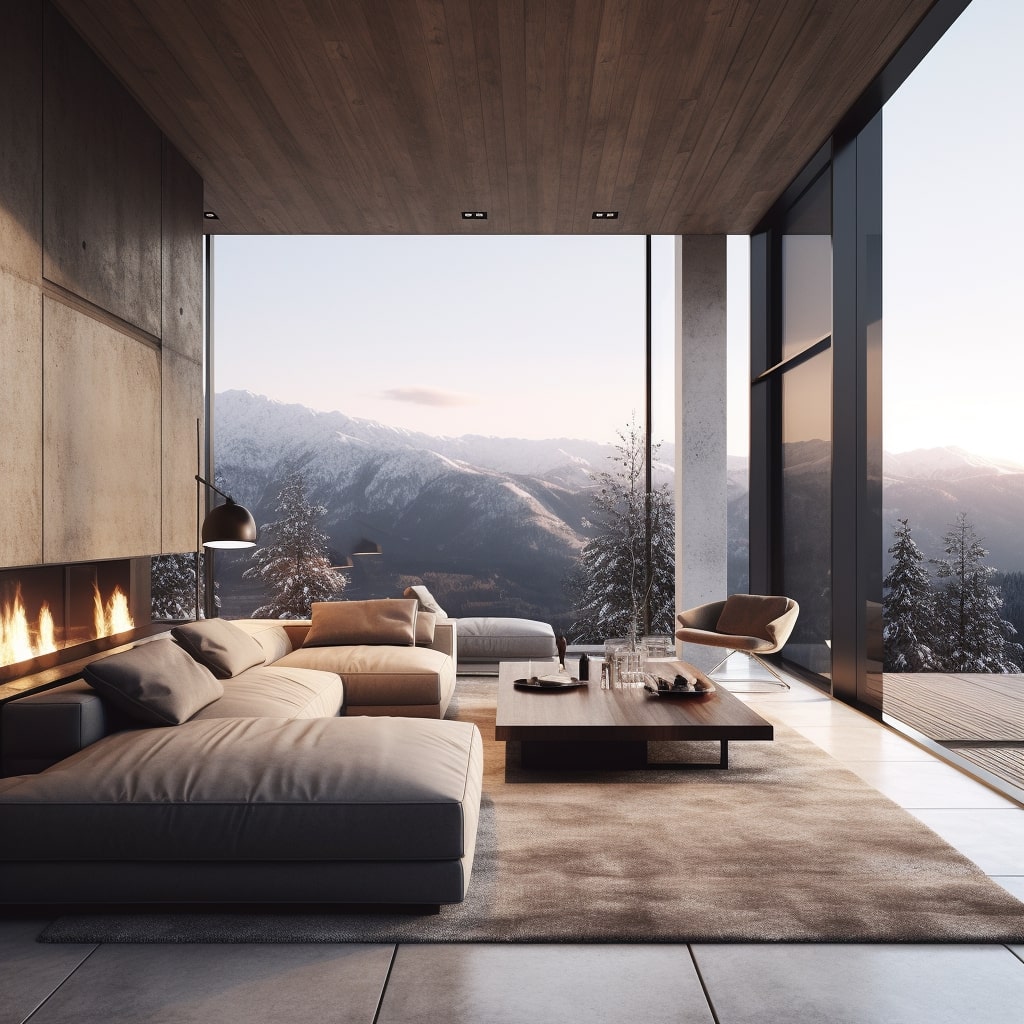

Using Scale to Achieve Balance in Interior Design
Scale is a crucial element in achieving balance and harmony in interior design. Proper scaling can help distribute visual weight evenly throughout a space, creating a sense of equilibrium and proportion. Here are some tips and techniques for using scale to achieve balance in your interior design projects:
Understand Visual Weight
Visual weight refers to the perceived heaviness or lightness of design elements within a space. Large or dark objects tend to have more visual weight than smaller or lighter ones. By understanding visual weight, you can strategically distribute it throughout a room to create balance and harmony.
Play with Proportions
Proportion is the relationship between different design elements in terms of size and scale. Experimenting with different proportions can help create visual interest and balance in a space. For example, pairing a large sofa with smaller accent chairs can balance out the visual weight and create a cohesive grouping.
Use Scale to Solve Design Challenges
Scale can be an effective tool for solving design challenges, such as awkward room layouts or small spaces. For example, choosing furniture pieces that are appropriately sized for a small space can help maximize functionality and create a sense of balance.
| TIP: | Measuring your space and creating a floor plan can help you determine the appropriate scale for furniture and decor. |
|---|
Create Focal Points
Using scale to create focal points can add visual interest and draw the eye towards specific design elements within a space. For example, using oversized artwork or a statement light fixture can create a dramatic focal point.
Mix Scales Harmoniously
Mixing different scales and sizes of furniture and decor can add depth and texture to a space. However, it’s important to mix scales harmoniously to avoid a cluttered or disorganized look. A general rule of thumb is to stick to no more than three different scales in a room.
By utilizing scale effectively, you can achieve a balanced and harmonious interior design that is both functional and visually appealing. Keep these tips in mind when selecting and arranging furniture and decor in your next project.
Related: What is gradation in interior design?
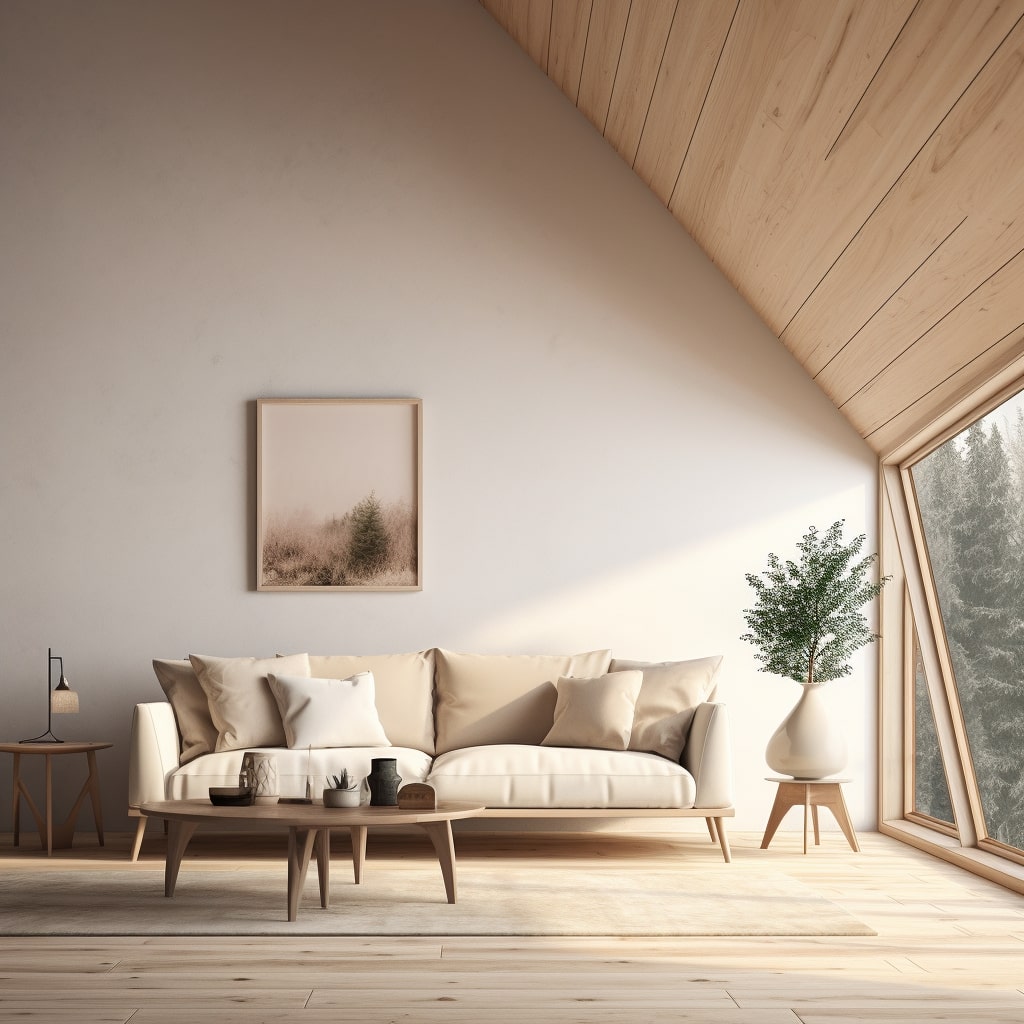

Scale in Design Elements
In interior design, scale is a crucial element that impacts the overall look and feel of a space. By manipulating the scale of various design elements, designers can create visual interest, define different functional areas, and enhance certain architectural features. Here’s a closer look at how scale is applied to different design elements:
Furniture
The scale of furniture is one of the most critical factors in interior design. Choosing the right size and shape of furniture can help create a well-proportioned and harmonious room. For instance, if a room has high ceilings, choosing a tall and grand bookshelf can balance the height of the room and prevent it from looking too empty. On the other hand, if a room has low ceilings, a low-profile sofa and chairs will help create a feeling of spaciousness.
Lighting
The scale of lighting fixtures can have a significant impact on the overall mood of a room. A large chandelier can serve as a statement piece, drawing the eye upward and enhancing the vertical space. On the other hand, small table lamps can provide a subtle and cozy ambiance, and they work well in smaller spaces.
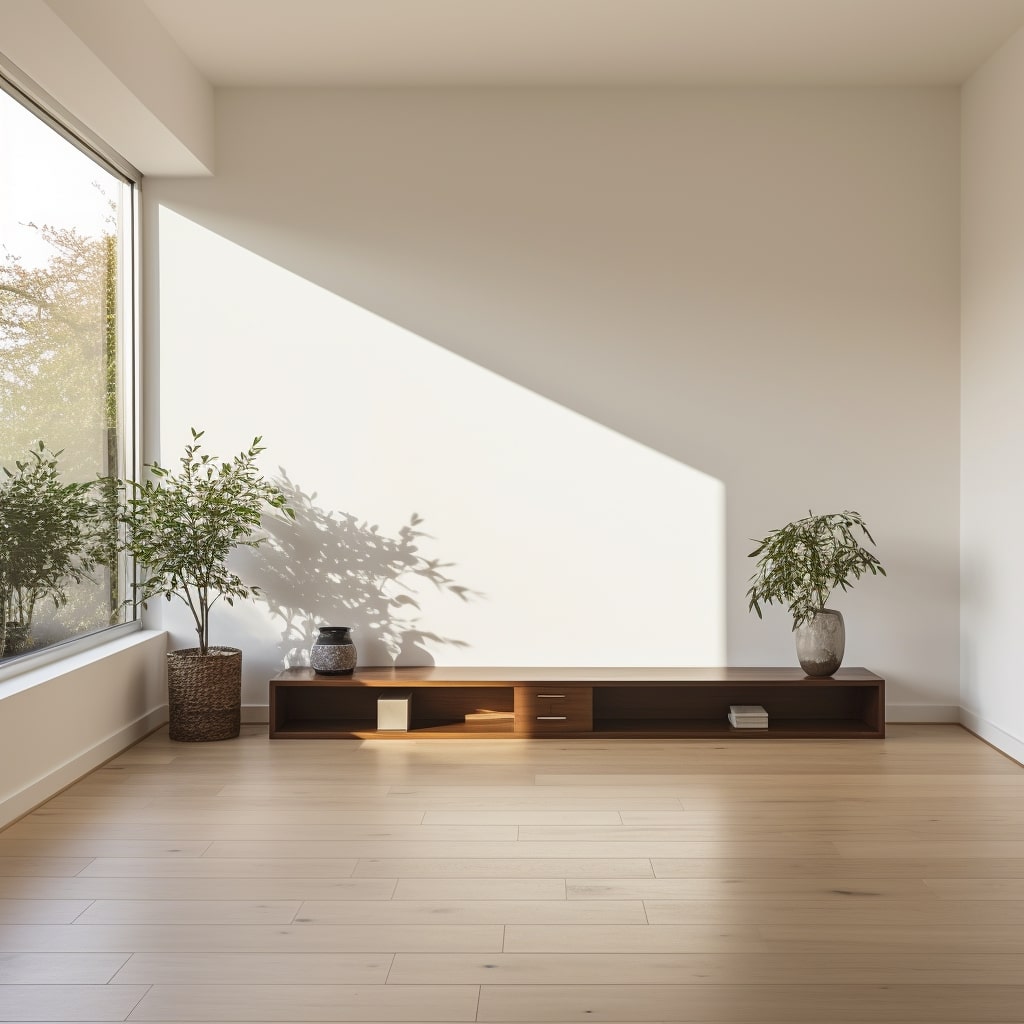

Artwork
When it comes to artwork, the scale should be proportional to the size of the wall and the surrounding furniture. Large artwork can create a focal point and command attention, while small artwork can be used to create a gallery wall or add a personal touch to a room.
Accessories
Accessories such as pillows, rugs, and curtains can also benefit from proper scaling. Large pillows can help add volume to a sofa, while a small rug can define a reading nook. Curtains that extend from floor to ceiling can make a room feel taller, while shorter curtains can make a room feel cozier and more intimate.
Utilizing Scale in Room Design
Scaling is an essential factor to consider when designing a room. It can either make or break the overall look and feel of the space. Here are some practical tips for utilizing scale in room design:
Consider the Scale of the Room
The size of the room is the first factor to consider when choosing furniture and decor. For instance, larger furniture would look out of place in a small room, while small furniture would get lost in a large area.
Consider the ceiling height, as well. High ceilings provide an opportunity to use tall items and vertical elements, while lower ceilings require shorter objects and horizontal lines to create the illusion of height.
Choose Appropriate-Sized Furniture and Decor
When selecting furniture and decor, size matters. Avoid choosing pieces that are too large or too small for the space. Furniture should be proportional to the room size and provide adequate space to move around.
Consider the scale of the furniture in relation to other elements in the room. For instance, pairing an overstuffed sofa with tiny end tables would look unbalanced and awkward. Instead, choose complementary pieces with similar scale and proportion.
Create Focal Points with Scale
Using scale to create focal points is an effective way to draw the eye to a specific area in the room. For instance, a large artwork or statement piece of furniture can serve as a focal point, but it must be proportional to the space. Too large or too small a focal point can either overpower or get lost in the room.
Another way to create a focal point is through grouping items of varying scales together. For instance, grouping small and large decorative items on a shelf or tabletop can create visual interest and depth.
By following these tips and considering scale when designing a room, you can achieve a balanced and harmonious space that is both functional and visually appealing.
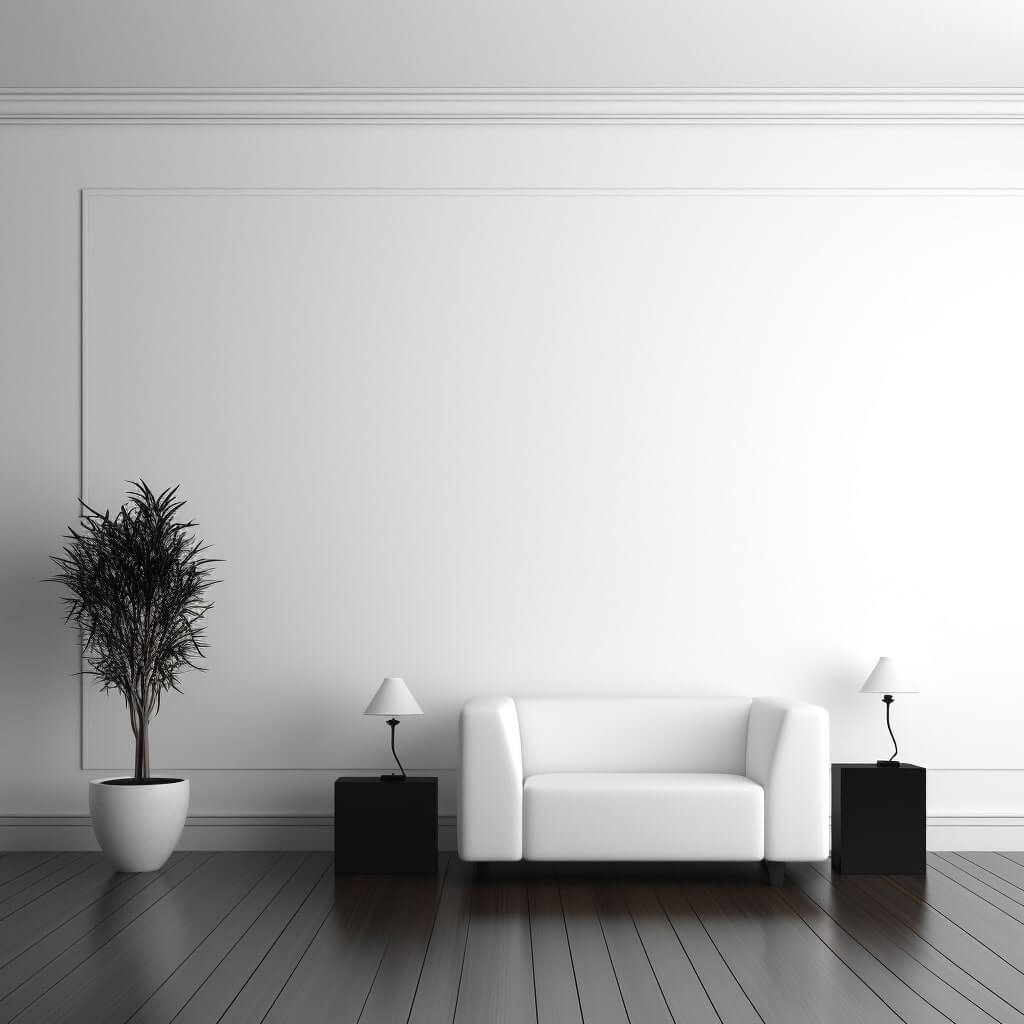

Tips for Using Scale in Interior Design
Whether you’re working on a large or small space, incorporating the right scale can make all the difference in achieving a cohesive and visually pleasing design. Here are some tips and tricks to help you use scale effectively:
1. Mix Scales
Don’t be afraid to mix different scales within a room. Combining large and small pieces can add visual interest and dimension. For example, pairing a large statement sofa with smaller accent chairs can create a balanced and inviting seating area.
2. Play with Proportions
Playing with proportions can help you achieve a unique and personalized design. Try incorporating oversized artwork or a statement light fixture that contrasts with the size of the furniture in the room.
3. Use Scale to Solve Design Challenges
If you’re struggling with a design challenge, such as a room with low ceilings, using the right scale can help you overcome the obstacle. Choosing furniture and decor with low profiles and avoiding bulky pieces can help create the illusion of height and space.
4. Create Visual Illusions with Scale
Manipulating scale can be a powerful tool in creating visual illusions. For example, placing a large mirror in a small room can make the space appear larger and more open. Similarly, using larger patterns on smaller pieces can create a sense of depth and texture.
By keeping these tips in mind, you can use scale to your advantage and create a beautifully balanced and harmonious space.
While you’re here: How to organize interior design materials like a pro.
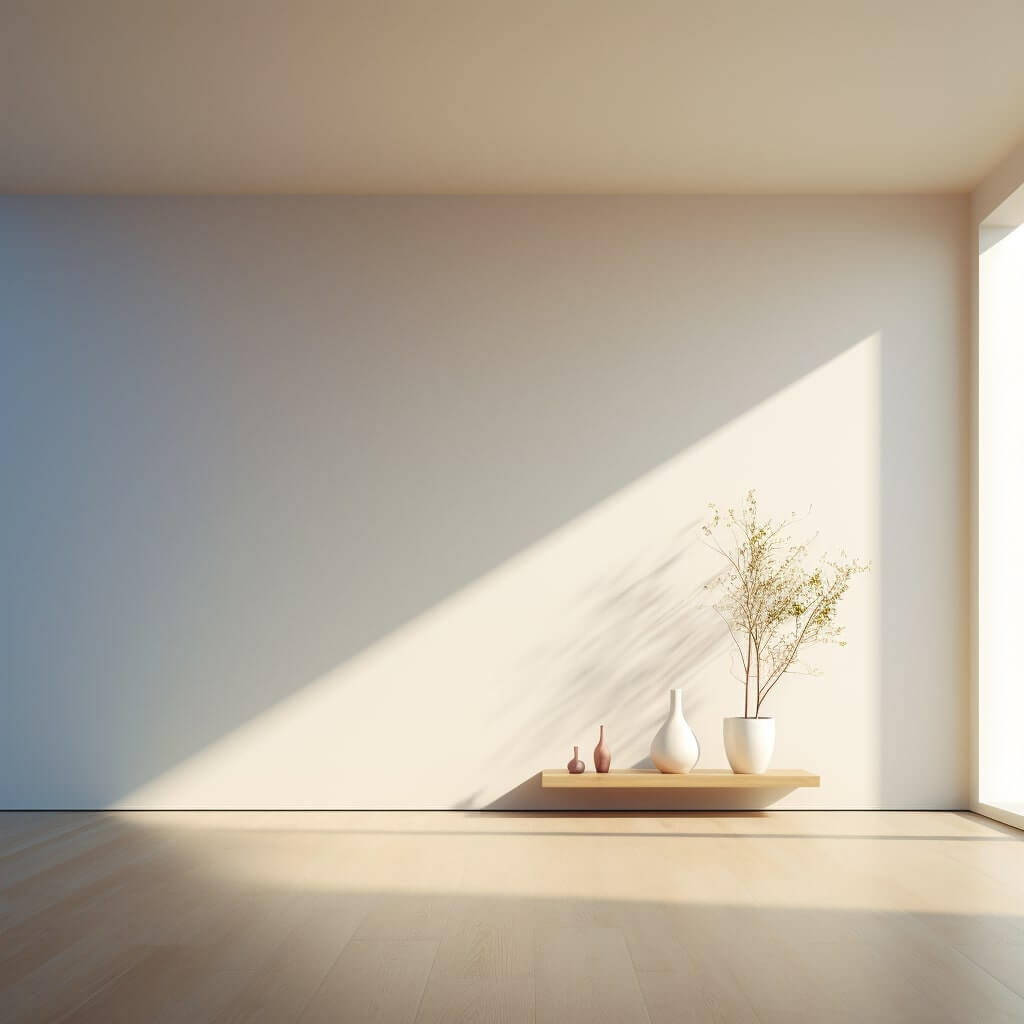

Achieving Balance and Harmony with Scale
While scale is important in its own right, it is equally important to consider how scale interacts with other design principles to create a cohesive and balanced overall design. Here are some tips on how to achieve balance and harmony with scale:
Consider Color
Color is a crucial element in interior design, and it should be considered alongside scale when designing a room. To ensure a harmonious design, choose colors that work well with the scale of your furniture and accessories. For example, if you have a large, bold sofa, consider balancing it with smaller, subdued accents in complementary colors.
Play with Texture
Texture is another element that can be used to balance and harmonize a room. By mixing textures with varying scales, you can add visual interest and depth to your design. For example, a plush rug can balance out a sleek sofa, or a chunky knit throw can add texture to a smooth velvet chair.
Use Pattern Thoughtfully
Pattern can also be used to create balance and harmony within a room. When mixing patterns, it’s important to consider the scale of each pattern and how they interact with one another. A large, bold pattern can be balanced out with smaller, more subtle patterns to create a cohesive look.
Keep it Cohesive
When incorporating scale into your design, it’s important to maintain overall cohesion. This means choosing furniture, accessories, and decor that work together in terms of scale, color, texture, and pattern. A cohesive design ensures that each element of the room works together to create a balanced and harmonious space.
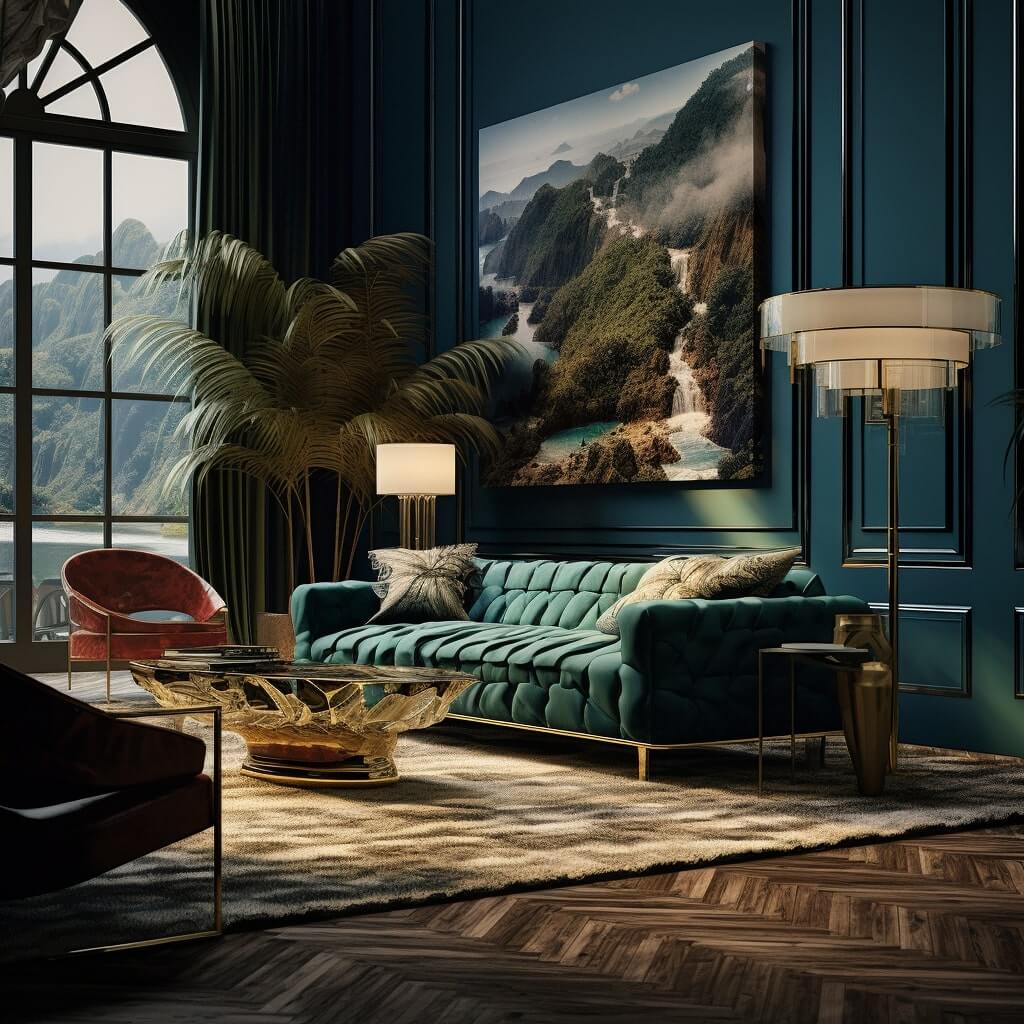

Scale in Interior Decorating
While scale is an important consideration in interior design, it is also a crucial aspect of interior decorating. Decorating is all about adding finishing touches to a space to create a cohesive and functional design. Scale plays a key role in ensuring that decorative elements complement the existing design rather than detract from it.
When it comes to decorating with scale, it’s essential to understand the impact of choosing the right size and proportion of decorative elements. Here are some tips to help you use scale in interior decorating:
1. Use scale to create visual interest
Decorative elements such as pillows, throws, and artwork can add personality and visual interest to a space. Using items of different scales that complement each other can create a dynamic look. For instance, using a large, bold print on a small pillow can draw the eye to the design, making it a feature in the room. Playing with scale adds depth and texture to any space.
2. Use scale to define areas
Decorative elements can also be used to create zones within an open plan space or a multifunctional room. Using rugs of different scales can help define different areas, such as a living area, a seating area, or a dining area. Using larger decor pieces, such as sculptures or plants, can create a focal point in a room, providing a designated area for relaxation or conversation.
3. Use scale to add texture
Texture is a crucial aspect of interior design and decorating. Using items of different scales can add texture and depth to a room. For example, a large, plush rug can add softness and warmth to a space, while small textured accents like throw pillows or blankets can add visual interest and a tactile experience.
Remember that while decorative elements can be used to create interest in a space, overusing them can lead to a cluttered and unbalanced design. Make sure to approach decorating with scale in a thoughtful and deliberate way to ensure that the overall design remains harmonious and balanced.
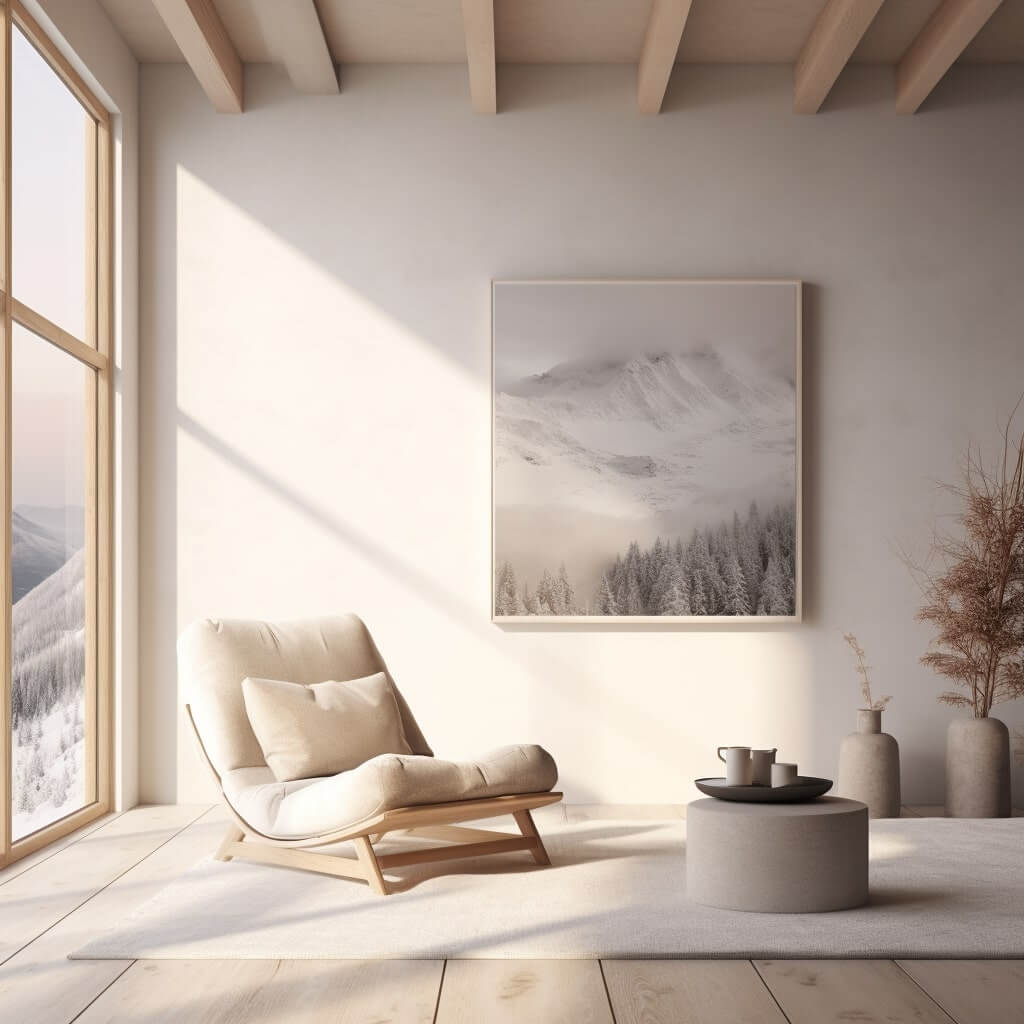

FAQ – Frequently Asked Questions about Scale in Interior Design
As with any aspect of interior design, there are often questions and uncertainties that arise when it comes to using scale effectively. Here are some of the most frequently asked questions about scale in interior design, along with expert answers and advice to help you achieve the perfect balance in your space.
What is the most important thing to consider when it comes to scale in interior design?
The most important thing to consider is balance. Achieving a sense of balance and harmony is key to creating a visually appealing and functional space. This means making sure that the sizes of different objects and elements within a room are proportional and harmonious, and that no one item dominates the space.
How do I know what the appropriate scale is for my room?
There is no one-size-fits-all answer to this question, as the appropriate scale will depend on the size and layout of your room, as well as your personal design style and preferences. A general rule of thumb is to avoid pieces that are too small or too large for the room, as this can create an unbalanced feeling. It can be helpful to experiment with different sizes and configurations until you find the perfect balance for your space.
How can I mix different scales harmoniously?
Mixing different scales can be a great way to create visual interest and add depth to a space. To do this effectively, it’s important to maintain a sense of balance and proportion. One technique is to use items of the same color or texture in different scales, which can help tie them together and create a cohesive feeling. Another approach is to use smaller decorative elements, such as artwork or accessories, to balance out larger pieces of furniture or accent pieces.
Can I use scale to make a room appear larger or smaller?
Yes, you can use scale to create the illusion of a larger or smaller space. For example, using larger furniture pieces in a small room can make it feel more spacious, whereas using smaller pieces in a large room can make it feel more cozy and intimate. Rugs can also be an effective tool for manipulating scale and making a space appear larger or smaller.
How should I scale artwork and decor in a room?
When it comes to scaling artwork and decor, it’s important to consider the size of the wall or surface on which they will be displayed. As a general rule, artwork should be scaled to be around two-thirds the size of the wall it will be displayed on. Decorative elements, such as vases or sculptures, should be scaled to the furniture or surface they will be placed on. It’s also important to consider the balance between different elements and ensure that no one piece overwhelms the space.
What are some common mistakes to avoid when it comes to scale?
One common mistake is choosing pieces that are too large or too small for the space or not considering the size of the room itself. Another mistake is failing to achieve balance and proportion, which can make a space feel cluttered or unbalanced. It’s also important to avoid creating too many visual distractions or focal points, which can make a space feel chaotic.







